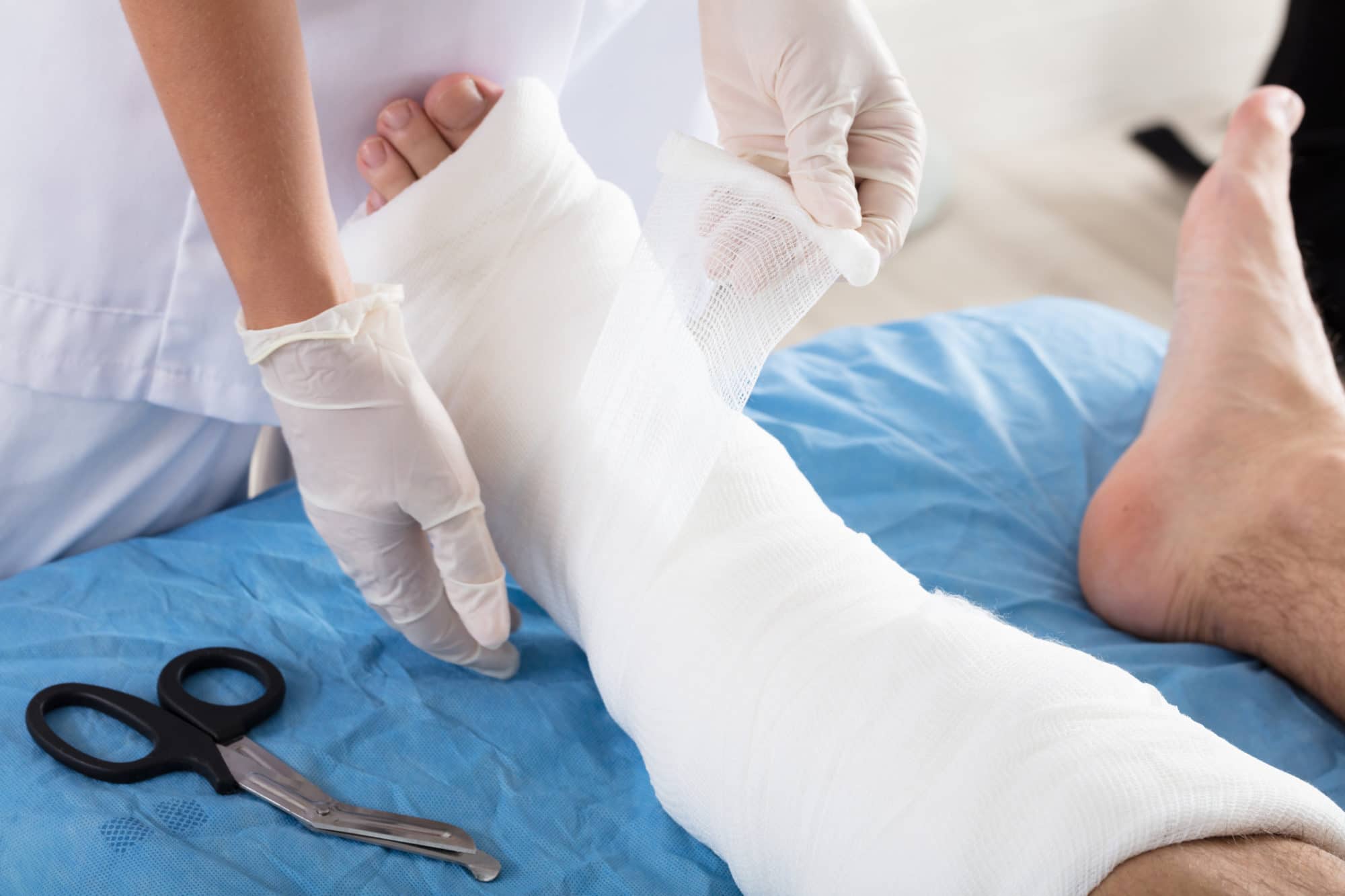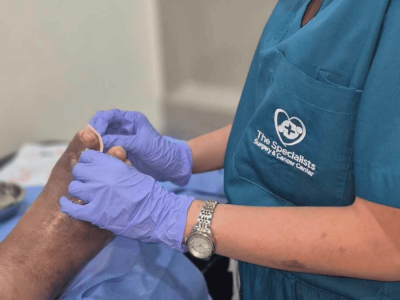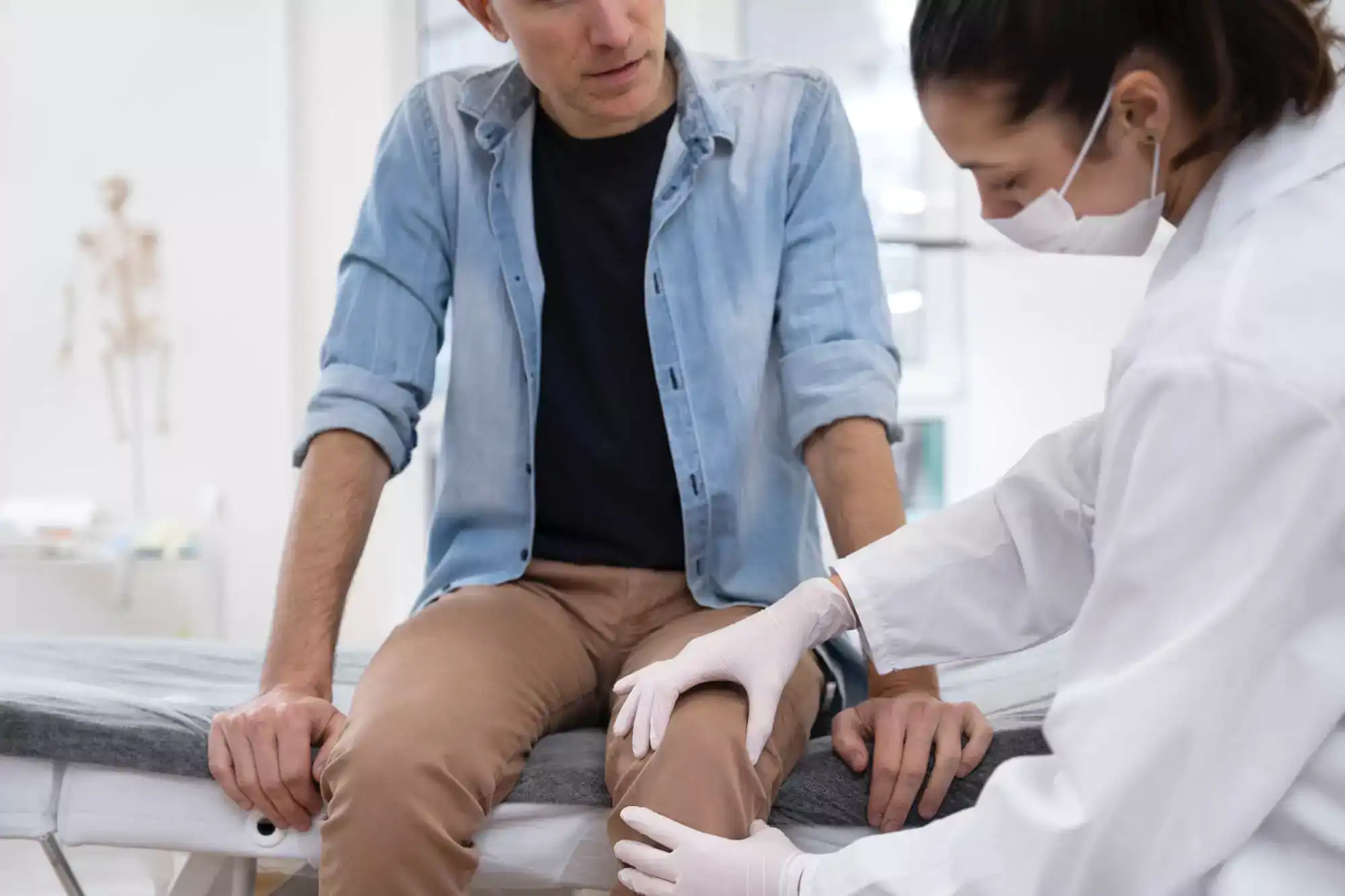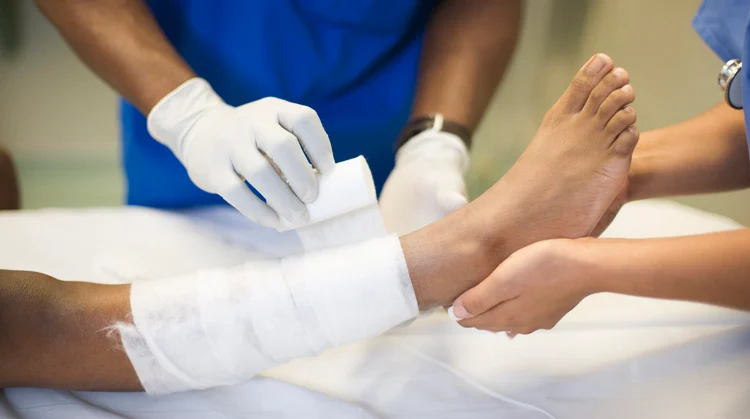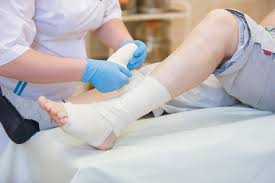Orthopedic wounds require special attention because they involve not only the skin but also deeper structures such as muscles, tendons, and even bones. When bacteria enter through surgical incisions, traumatic injuries, or chronic conditions like diabetic ulcers, the wound can become infected. This type of infection poses a serious risk because it may lead to complications that affect mobility and long-term bone health. Infected wounds can develop due to poor blood circulation, weakened immune systems, or inadequate post-surgical care. Left untreated, these infections may progress into osteomyelitis, a condition where bacteria invade the bone. The consequences can range from delayed healing and chronic pain to permanent disability. This is why orthopedic specialists emphasize the importance of early recognition and proper treatment of wound infections to protect both tissue and bone health.
Signs That Require Orthopedic Treatment
Recognizing the symptoms of an infected wound is essential for seeking timely orthopedic care. Patients often notice persistent redness around the wound that does not subside, coupled with swelling that worsens instead of improving. The affected area may feel unusually warm to the touch, which signals active inflammation. Pus, foul-smelling discharge, or a change in wound color can also be strong indicators of infection. Pain that intensifies rather than decreases after the initial healing phase may mean the infection is spreading. In some cases, systemic signs such as fever, chills, or fatigue may appear, suggesting that the infection has entered the bloodstream. Additionally, stiffness or reduced mobility in nearby joints can point to the possibility of a deeper musculoskeletal infection. These warning signs require immediate consultation with an orthopedic specialist to prevent further complications.
How Orthopedic Specialists Diagnose Infected Wounds
Diagnosis begins with a thorough physical examination and a detailed review of the patient’s medical history. Orthopedic doctors carefully evaluate the wound for signs of swelling, tenderness, or abnormal discharge. They may order imaging tests such as X-rays to determine whether the infection has reached the bone. In more complex cases, an MRI or CT scan provides a clearer picture of how far the infection has spread into soft tissues and bone structures. Laboratory tests are also crucial in confirming the diagnosis. Blood work can reveal elevated white blood cell counts or inflammatory markers, both of which signal infection. Wound cultures are taken to identify the exact bacteria responsible, which allows the physician to prescribe the most effective antibiotics. Distinguishing between superficial infections and those involving deeper tissues is critical in developing the right treatment plan. Without these steps, the infection could be mismanaged and lead to long-term orthopedic problems.
Treatment Options Provided by Orthopedic Doctors
Orthopedic treatment for infected wounds involves a combination of medical and surgical approaches tailored to each patient. The first step often includes wound debridement, which is the careful removal of dead or infected tissue to promote healthy healing. Antibiotic therapy plays a major role and may be administered orally, intravenously, or through localized delivery systems depending on the severity. Advanced wound care techniques, such as negative pressure wound therapy, help accelerate healing by increasing blood flow and reducing infection risk. Specialized dressings that control moisture and fight bacteria are also commonly used. In less severe cases, outpatient wound management may be sufficient, but serious infections often require hospitalization. Orthopedic doctors continuously monitor progress to ensure that the infection is under control and that surrounding tissues remain healthy. These treatments not only address the infection but also protect bone integrity, reducing the risk of long-term complications.
Surgical Approaches for Severe Infections
When infections become severe or do not respond to conservative measures, surgical intervention becomes necessary. One of the most common procedures is incision and drainage, where the surgeon removes pus and infected tissue to allow proper healing. In cases where the infection has spread to bones or joints, more complex procedures such as bone grafting may be required to restore structural stability. Patients with hardware-related infections, such as those involving plates, screws, or artificial joints, may need to have the implants removed or replaced. Reconstructive surgery may also be performed to rebuild damaged tissues and restore function. These operations are often combined with long-term antibiotic therapy to ensure complete eradication of the infection. Although surgery can be daunting, it is often the most effective way to stop infection from spreading further and to preserve mobility. Orthopedic surgeons use these advanced methods to give patients the best chance of recovery and return to normal activity.
The Role of Multidisciplinary Care in Healing
Treating infected wounds often requires collaboration between different medical specialties. Orthopedic surgeons take the lead in addressing musculoskeletal complications, but wound care specialists bring expertise in advanced dressing techniques and tissue management. Infectious disease physicians contribute by selecting the most effective antibiotic regimens. Physical therapists also play an important role in helping patients regain strength, flexibility, and mobility after treatment. Nutritionists may be involved to recommend diets rich in protein, vitamins, and minerals that promote faster wound healing. Patients benefit greatly from this team-based approach because it addresses not only the infection but also the overall well-being required for recovery. Education is another key component of multidisciplinary care. Patients and caregivers receive guidance on how to properly clean and dress wounds at home, recognize early signs of reinfection, and adopt healthy habits to support healing. This cooperative model ensures comprehensive care for patients with infected wounds.
Preventing Infected Wounds After Orthopedic Procedures
Prevention begins before surgery and continues throughout recovery. Surgeons take careful steps to minimize infection risks by following strict sterilization procedures and using advanced surgical techniques. After surgery, patients are instructed to keep incisions clean and dry, which significantly lowers infection risk. Regular follow-up appointments allow physicians to monitor healing and identify complications early. Lifestyle factors also play a major role. Patients with diabetes must keep blood sugar levels under control, while those who smoke should consider quitting to improve circulation and immunity. Proper nutrition with sufficient protein and vitamins supports the body’s natural defense system. Physical activity, when recommended by a physician, promotes circulation and reduces the risk of complications. By taking these preventive measures, patients can improve their chances of a smooth recovery and reduce the likelihood of developing infected wounds after orthopedic procedures.
Long-Term Outlook for Patients Treated by Orthopedic Specialists
The recovery timeline varies depending on the severity of the infection and the type of treatment provided. Minor infections may resolve within weeks, while more complicated cases involving bone infections may require months of therapy. Patients who undergo surgery often need additional rehabilitation to restore joint mobility and muscle strength. The risk of chronic complications such as osteomyelitis remains, which makes long-term monitoring essential. Fortunately, advances in orthopedic medicine have significantly improved patient outcomes. With proper care, many individuals regain full functionality and return to their daily routines without long-term disability. Rehabilitation programs that include physical therapy, nutritional support, and lifestyle adjustments can further enhance recovery. Orthopedic specialists emphasize the importance of continued care to ensure lasting results and prevent recurring infections. This comprehensive approach helps patients maintain bone and joint health for the future.
Frequently Asked Questions (FAQ)
1. What makes orthopedic treatment different from general wound care?
Orthopedic treatment focuses on wounds that affect the musculoskeletal system, meaning infections that may spread to muscles, joints, or bones. General wound care often handles surface-level infections, but orthopedic specialists have the expertise to manage deeper infections that can impact mobility and bone health.
2. How do I know if my wound infection has spread to the bone?
Symptoms such as persistent pain, swelling that does not improve, fever, and difficulty moving the affected limb may indicate that the infection has reached the bone. Imaging tests and lab work ordered by an orthopedic doctor are the best ways to confirm whether osteomyelitis is present.
3. Are antibiotics always necessary for infected wounds?
Yes, antibiotics are a primary part of treating infected wounds. However, the type and delivery method—oral, intravenous, or localized—depend on the severity of the infection. In some cases, surgery may also be required to remove infected tissue.
4. Can infected wounds heal without surgery?
Some mild infections respond well to antibiotics and advanced wound care techniques without the need for surgery. However, severe or deep infections that affect bone or involve implants often require surgical intervention to fully resolve.
5. What steps can patients take at home to prevent orthopedic wound infections?
Patients should follow wound care instructions provided by their doctors, maintain good hygiene, manage chronic conditions like diabetes, eat a balanced diet rich in healing nutrients, and attend follow-up appointments. These steps greatly reduce the risk of infection recurrence.

